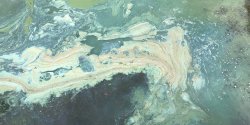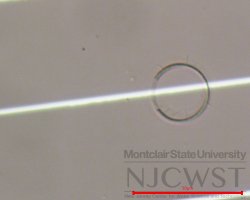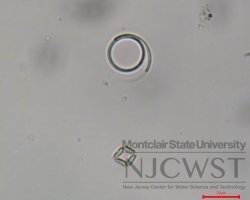Taxonomy
- Order
- Synechococcales
- Family
- Leptolyngbyaceae
- Genus
- Planktolyngbya
Examples of Planktolyngbya
Morphology
Solitary, free-floating filaments. Filaments are straight, curved, waved, or coiled (screw-like or irregularly); relatively narrow (cells up to 3-5 μm wide); only very rarely with false branching. Sheaths present; firm, thin, colorless; sheaths can often be seen extending beyond the ends of the trichome (as is the case in both images to the right). Trichomes isoplar, cylindrical, not narrowed at the ends; uniseriate; unconstricted to slightly constricted at crosswalls (which are often not distinctly visible); immotile. Cells cylindrical; typically longer than wide; rarely almost isodiametric; without aerotopes, or with one solitary polar (near one end of the cell) aerotope; apical cells rounded to bluntly pointed, not conical or capitate.
Ecology
Found in the plankton of reservoirs and lakes.
References
- Johansen, J. R., & Komárek, J. (2015). Filamentous Cyanobacteria. In J. D. Wehr, R. G. Sheath, & J. P. Kociolek (Eds.), Freshwater Algae of North America: Ecology and Classification (2nd ed., pp. 146-155). Waltham, MA: Elsevier.
- Komárek, J. & Anagnostidis, K. (2008). Cyanoprokaryota-2. Teil/Part 2: Oscillatoriales. In B. Büdel, G. Gärtner, L. Krienitz, & M. Schagerl (Eds.), Süßwasserflora von Mitteleuropa (Vol. 19/2, pp. 156-157). Heidelberg, Germany: Spektrum.


